Exciting PEAK Experience Projects Set for Summer 2023
Undergraduate Research and Fellowships is delighted to announce our summer 2023 PEAK Experiences Awardees They will be pursuing a diverse set of projects, including a study of a pathogen that haunts hospitals, an examination of segregationist rhetoric in Boston newspapers, and an analysis of creativity in music. Read on to learn more about their remarkable projects.
Base Camp Awardees
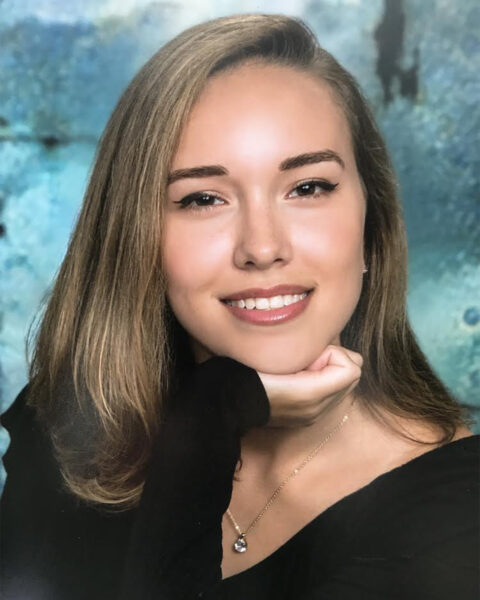 Christina Aniolek COE’25, “Optimizing Organ-On-A-Chip Culture of HUVEC Cells for Dynamic Monitoring of Barrier Integrity”
Christina Aniolek COE’25, “Optimizing Organ-On-A-Chip Culture of HUVEC Cells for Dynamic Monitoring of Barrier Integrity”
Mentor: Abigail Koppes, COS, Chemical Engineering
I will be studying organ-on-a-chip technology, specifically how a cellular layer on the chip is impacted when a detergent is washed over the cells. This includes studying the effects of detergent concentration on the health of the cellular layer and learning about cell culture, aseptic technique, and laser cutting.
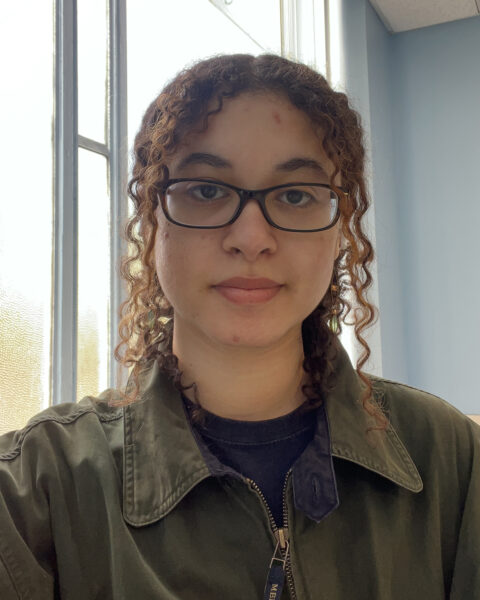 Mariam Ahmed COS’25, “Elucidation of Neural Mechanisms Underlying Modulation of Physiological Activity of an Intrinsic Brain Oscillator”
Mariam Ahmed COS’25, “Elucidation of Neural Mechanisms Underlying Modulation of Physiological Activity of an Intrinsic Brain Oscillator”
Mentor: Gunther Zupanc, COS, Biology
Compounds hypothesized to interfere with the regulation of the pacemaker nucleus, an intrinsic neural oscillator in the brainstem of the weakly electric fish Apteronotus leptohynchus, will be tested. The oscillation frequency will be indirectly observed through electric organ discharges, controlled in a one-to-one fashion with oscillations of the pacemaker nucleus
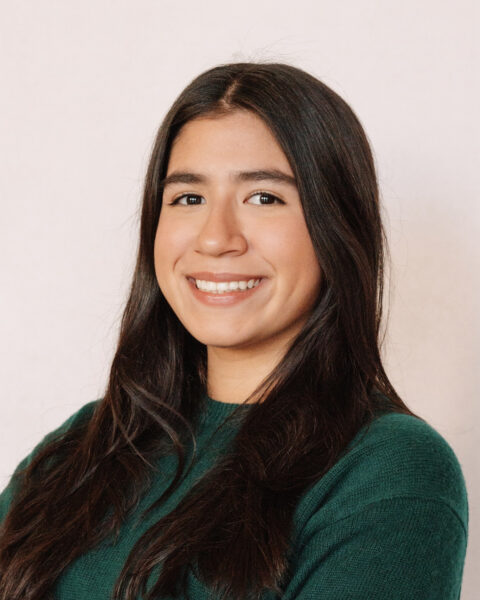 Carolina Aponte COS’26, “Identifying Mutations That Increase Phage Virulence”
Carolina Aponte COS’26, “Identifying Mutations That Increase Phage Virulence”
Mentor: Edward Geisinger, COS, Biology
Bacteriophages, or viruses that attack bacteria, are a possible alternative mode of treatment against life-threatening infections with the antibiotic-resistant bacterium, A. baumannii . To discover mutations that make some phages hyper-virulent to A. baumannii , I will isolate and sequence their genomes. The results may contribute to development of improved antimicrobial therapies.
 Ahadu Betselot COS’25, “Cognitive and Socio-Emotional Development Across Adolescence”
Ahadu Betselot COS’25, “Cognitive and Socio-Emotional Development Across Adolescence”
Mentor: Juliet Davidow, COS, Psychology
My role will primarily be recruitment and data collection with kids, teens, and adults for a study on cognitive and socio-emotional development. I ll learn about the research techniques used to study children and adolescents and how these techniques differ from methods used with different age groups to achieve successful experimentation.
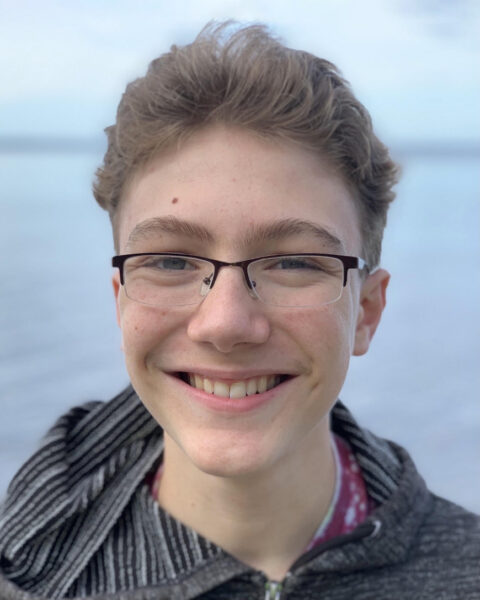 Linden Burack COS’26, “Informing Models of Chromatin Accessibility”
Linden Burack COS’26, “Informing Models of Chromatin Accessibility”
Mentor: Michele Di Pierro, COS, Physics
I will test the assumptions underlying digital simulations of Hi-C, a chromatin structure assay. This extends the work I’ve been privileged to perform with Michele Di Pierro, PhD., and Bernardo Zubillaga Herrera, PhD.
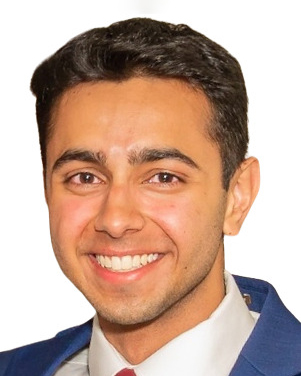 Rohan Chopra Khoury’26, “The Biology of Trauma and Resilience Initiative at the Broad Institute of MIT and Harvard”
Rohan Chopra Khoury’26, “The Biology of Trauma and Resilience Initiative at the Broad Institute of MIT and Harvard”
Mentor: Alisa Lincoln, CSSH, Sociology and Anthropology
Although much is known about the effects of trauma, little is known about the biological mechanisms and pathways it impacts. We seek to understand the mechanisms by which childhood trauma gets under the skin of patients and shapes how they think, feel, and behave, for the remainder of their lives.
 Marc D’Almeida COE’24, “Exploring the Gestural Mapping of Contemporary Electronic Music”
Marc D’Almeida COE’24, “Exploring the Gestural Mapping of Contemporary Electronic Music”
Mentor: Hubert Ho, CAMD, Music
This research project aims to investigate the extent to which people connect to contemporary electronic music on the level of traditional music, evaluating the characteristics of traditional music that create a response in the listener and evaluating the extent to which electronic music matches these characteristics.
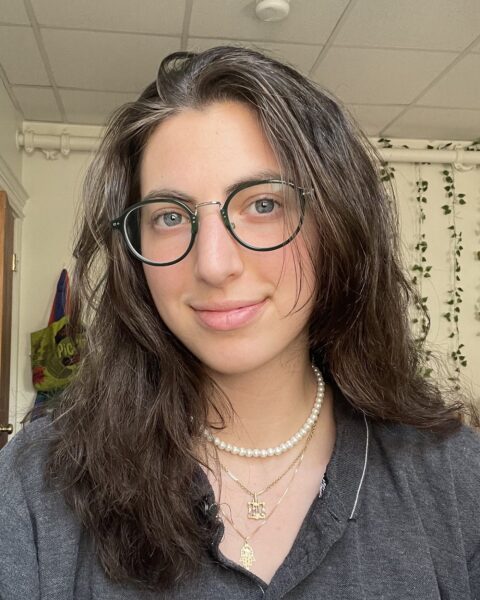 Maya Einhorn COE’26, “Sun-Tag Project”
Maya Einhorn COE’26, “Sun-Tag Project”
Mentor: Tova Day, COS, Biology
G-quadruplexes are DNA structures that form in DNA sequences with a lot of guanines and can be associated with different diseases. Our goal is to combine a protein developed to bind to G4s with the Sun-Tag tagging system to create an alternative imaging and flow cytometry probe for G4s.
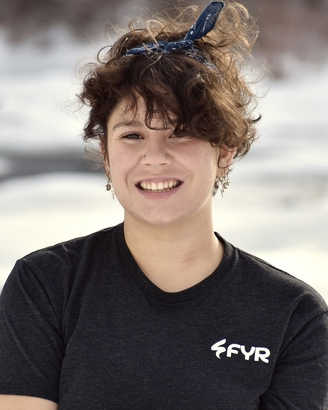 Whitney Hansberry COE’25, “Effects of Hydrogen Sulfide Concentrations in the Mucosal Layer of the Microbiome”
Whitney Hansberry COE’25, “Effects of Hydrogen Sulfide Concentrations in the Mucosal Layer of the Microbiome”
Mentor: Rebecca Carrier, COE, Chemical Engineering
I will be working in Professor Carrier’s Advanced Drug Delivery Lab on research regarding the mucus layer of the microbiome. Experiments that I will be leading include testing the effects of different concentrations of hydrogen sulfide with the use of nanoparticles.
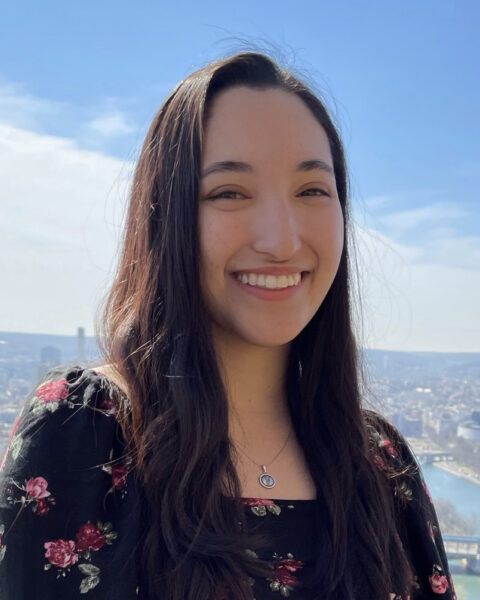 Emma Harden COS’24, “Labels of Exclusion: A Scoping Review of How Categorization of Migrants Affects Health and Wellbeing”
Emma Harden COS’24, “Labels of Exclusion: A Scoping Review of How Categorization of Migrants Affects Health and Wellbeing”
Mentor: Carmel Salhi, Bouvé, Health Sciences
The goal of this scoping review is to describe how forced migration has been defined in public health literature. The motivation of this work is to examine how the labels and categories into which migrants are sorted have limited our understanding of the process of migration.
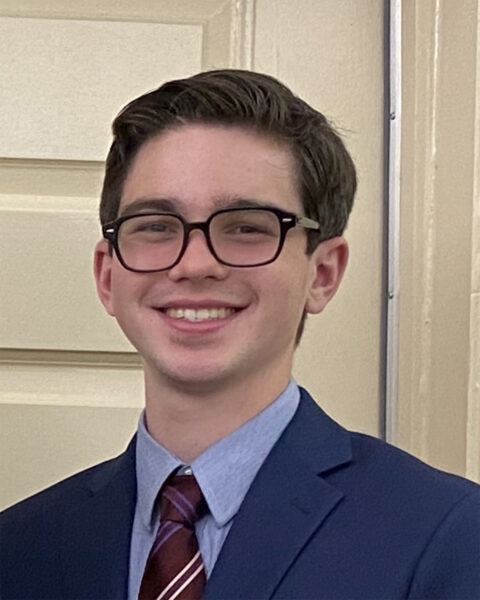 Stephen Landry COE’25, “Effect of Enteric Neuron Activity on Mucus Secretion in the Intestines”
Stephen Landry COE’25, “Effect of Enteric Neuron Activity on Mucus Secretion in the Intestines”
Mentor: Abigail Koppes, COE, Chemical Engineering
It is well-documented that neurodegenerative disorders such as Parkinson’s disease can negatively impact gut health, which is largely influenced by microbiota that rely on intestinal mucus to thrive. This project seeks to understand the importance of enteric neurons in the production of the mucus that lines intestinal epithelial cells.
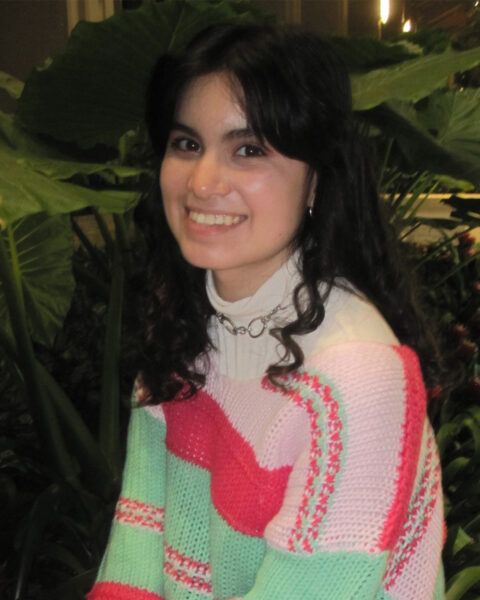 Carolina Laracilla CSSH’26, ” Mapping the Connections Between New England and the Caribbean”
Carolina Laracilla CSSH’26, ” Mapping the Connections Between New England and the Caribbean”
Mentor: Elizabeth Dillon, CSSH, English
I am researching and documenting the movements of Samuel Parris and the (likely) Arawak enslaved woman, Tituba, key figures in the Salem Witch Trials. This project maps the connections between New England and the Caribbean to show how enslaved African and Indigenous American people shaped the Atlantic world.
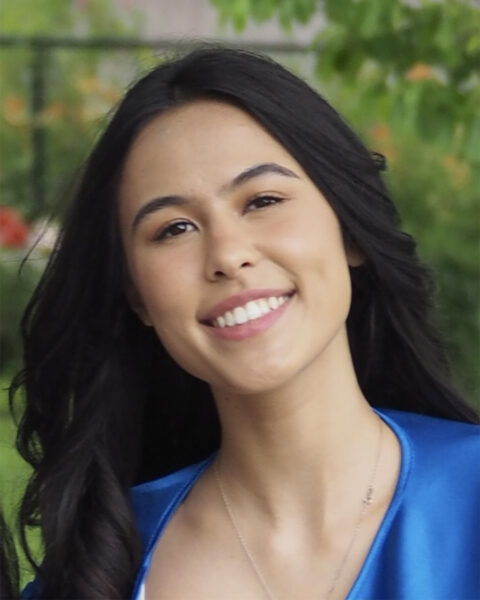 Chloe Mak COS’26, “A Placed-Based Initiative: The Sacramento ACEs Project”
Chloe Mak COS’26, “A Placed-Based Initiative: The Sacramento ACEs Project”
Mentor: Alisa Lincoln, CSSH, Sociology and Anthropology
I hope to advance my knowledge in research and data analysis skills that are focused on Adverse Childhood Experiences, including qualitative analysis and qualitative coding. My goal is to continue improving my work on coding memos and reports and to support writing scientific reports for the funder.
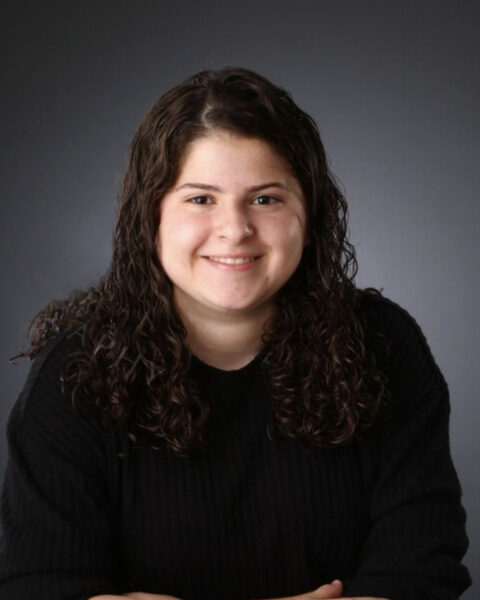 Avery Melam Bouvé’26, “The Impact of Power-Wheelchair Adaptive Sports Opportunities on the Fitness and Sense of Belonging in Individuals with Disabilities”
Avery Melam Bouvé’26, “The Impact of Power-Wheelchair Adaptive Sports Opportunities on the Fitness and Sense of Belonging in Individuals with Disabilities”
Mentor: Lorna Hayward, Bouvé, Physical Therapy Movement, and Rehab Science
This study aims to identify quality of life and physical benefits of participation in power-wheelchair team sports, specifically volt hockey and power soccer, and explore barriers to participation for people with disabilities.
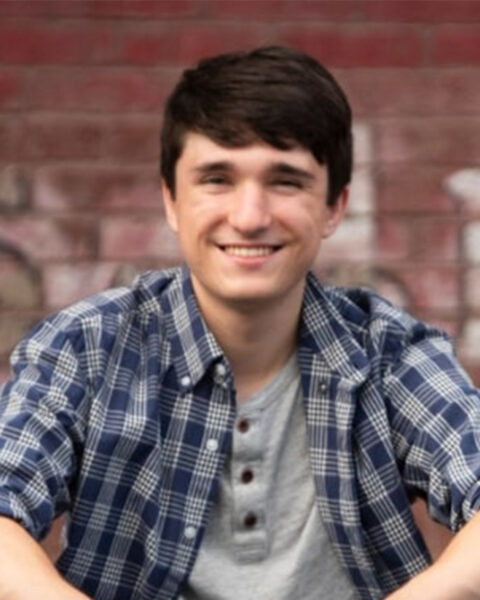 Griffin Michalak Khoury’26, “Mapping Electronic Sounds to Musical Gestures: An Investigation of Embodied Music Cognition”
Griffin Michalak Khoury’26, “Mapping Electronic Sounds to Musical Gestures: An Investigation of Embodied Music Cognition”
Mentor: Hubert Ho, CAMD, Music
I plan to analyze several electronic compositions, mapping contemporary electronic sounds onto musical gestures. Working with a team, we’ll listen, annotate, and categorize compositions. This project aims to deepen my understanding of digital humanities, interdisciplinary research, and contribute to musical corpus studies. Awarded wage will support my commitment.
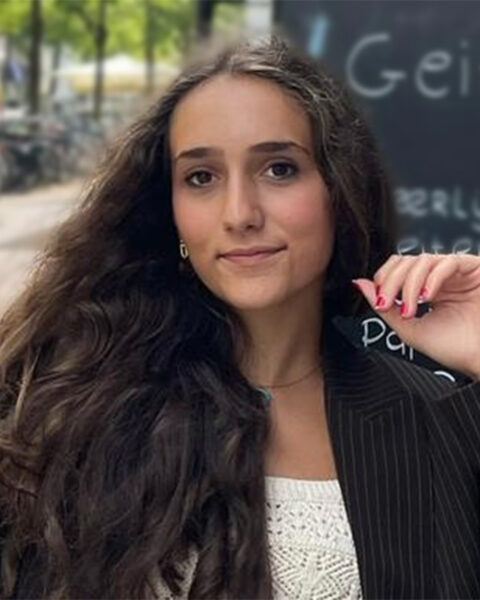 Sofia Odeh COE’26, ” Stereo Camera Sensor Interfacing on COBRA Rover: Enhancing Autonomy for Lunar Exploration”
Sofia Odeh COE’26, ” Stereo Camera Sensor Interfacing on COBRA Rover: Enhancing Autonomy for Lunar Exploration”
Mentor: Alireza Ramezani, COE, Electrical and Computer Engineering
COBRA (Crater Observing Bio-inspired Rolling Articulator) is a snake-like robot designed for the exploration of the lunar surface. By integrating two camera sensors into the robot’s software pipeline, real-time images of its motion will be received resulting in enhanced spacial awareness and independence.
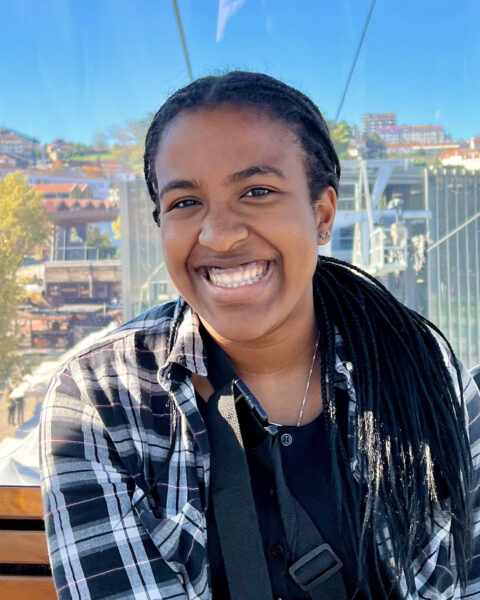 Keneya Onuaguluchi CSSH’25, “Parenting and Incarceration”
Keneya Onuaguluchi CSSH’25, “Parenting and Incarceration”
Mentor: Patrice Collins, CSSH, Criminology & Criminal Justice
The project seeks to investigate how all facets of life are affected by incarceration. My research will be focused on parenting issues such as child support debt and family relations upon release.
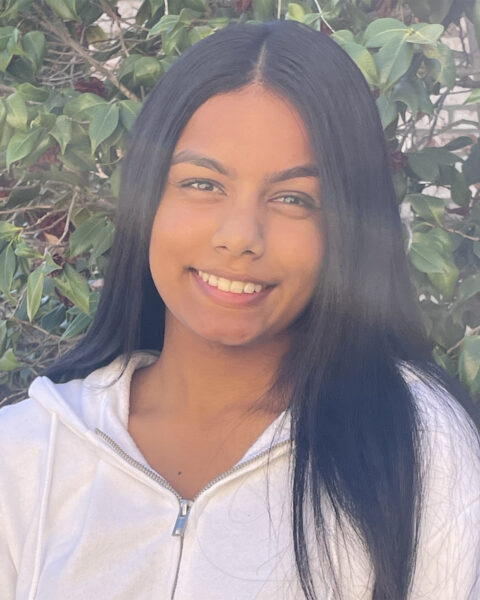 Priya Palaniappan Bouvé’24, “Impact of Community- and Incentive-based Approaches on the Demand for Sickle Cell Disease Newborn Screening in Nigeria: A Pilot Study”
Priya Palaniappan Bouvé’24, “Impact of Community- and Incentive-based Approaches on the Demand for Sickle Cell Disease Newborn Screening in Nigeria: A Pilot Study”
Mentor: John Olawepo, Bouvé, Health Sciences
I am working on a study under Dr. Olawepo to evaluate the efficacy of a community-based platform that educates pregnant women in Nigeria on the importance of screening for sickle cell disease in themselves and eventually their newborns.
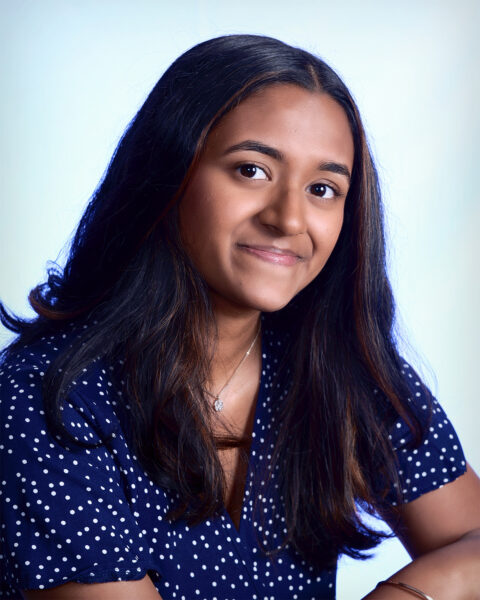 Sangeetha Punnam D’Amore’26, “Examining Diversity in TV Advertising through the Lens of Life Course and Agenda Setting Theories”
Sangeetha Punnam D’Amore’26, “Examining Diversity in TV Advertising through the Lens of Life Course and Agenda Setting Theories”
Mentor: Yakov Bart, DMSB, Marketing
Working alongside Dr. Yakov Bart, I hope to analyze how major corporations react to and shape the cultural landscape through their advertising. Specifically, I will be researching whether the ethnic and gender diversity of a business’ leadership is associated with its willingness to support DEI campaigns.
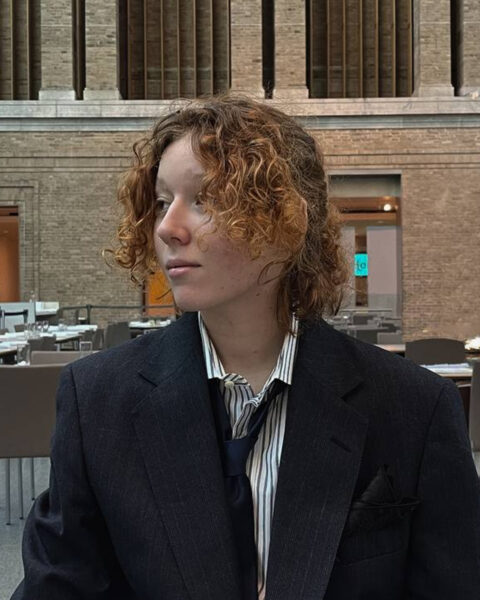 Zlata Rezanova CAMD’26, “The Commute”
Zlata Rezanova CAMD’26, “The Commute”
Mentor: Bill Stout, CAMD, Art and Design
I hope to work as a 3D designer and modeller for a 3D animated movie called “The Commute” and focus mainly at modelling characters and the set of the movie.
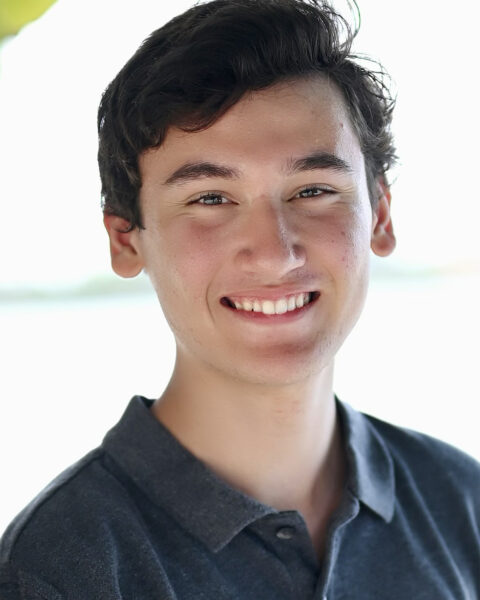
Nikolas Sanderson COE’26, “Extra Cavity Pulse Splitter”
Mentor: Bryan Spring, COS, Physics
I am applying laser physics to achieve better results for cancer imaging and microsurgery. Lasers have enormous amounts of power; we only use a fraction of it because of tissue damage and poor image quality. I am developing a way that allows us to use these higher amounts of power.
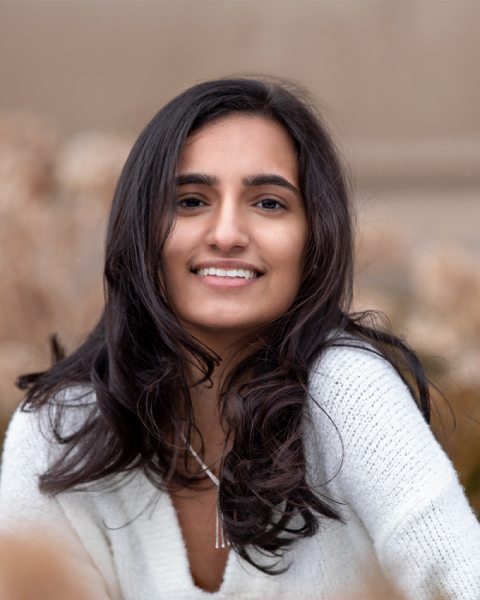 Jasminder Sarkaria Bouvé’25, “Sacramento ACEs Project: A Place-Based Initiative Educating on Adverse Childhood Experiences”
Jasminder Sarkaria Bouvé’25, “Sacramento ACEs Project: A Place-Based Initiative Educating on Adverse Childhood Experiences”
Mentor: Alisa Lincoln, CSSH, Sociology and Anthropology
I hope to gain and enhance my research skills such as qualitative analysis, qualitative coding, and memo analysis. Part of my deliverable will be helping to write a scientific report from the survey to the funder.
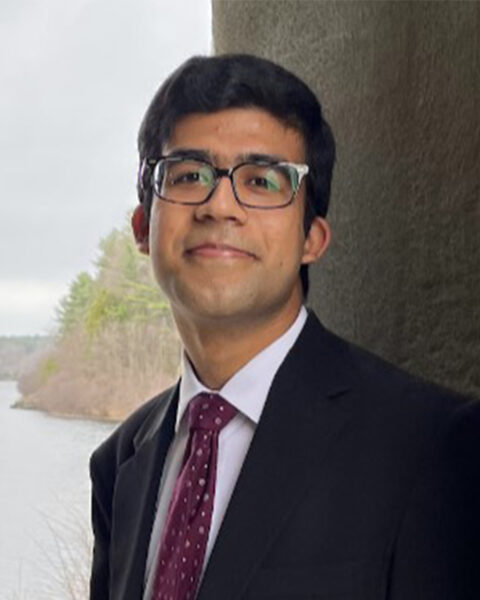 Ansh Tripathi COS’26, “Synthesis and Characterization of a Ruthenium Photocatalyst”
Ansh Tripathi COS’26, “Synthesis and Characterization of a Ruthenium Photocatalyst”
Mentor: Hannah Sayre, COS, Chemistry & Chemical Biology
My aim is to synthesize and characterize a ruthenium photocatalyst that can utilize low-energy light, specifically red light, to allow for higher-energy reactions in a more cost-effective and environmentally friendly way than existing industrial solutions.
 Sofia Valentin Bouvé’25, “Impact of Drug Checking Technologies on Drug Using Behaviors: A Qualitative Approach”
Sofia Valentin Bouvé’25, “Impact of Drug Checking Technologies on Drug Using Behaviors: A Qualitative Approach”
Mentor: Claudia Santelices, Bouvé, Health Sciences
The goal of this project is to understand the experiences people with opioid use disorder have with drug-checking services–informing them of the content of their substances–in order to explore the impact acquired knowledge from these services has on local drug-using practices and harm reduction practices.
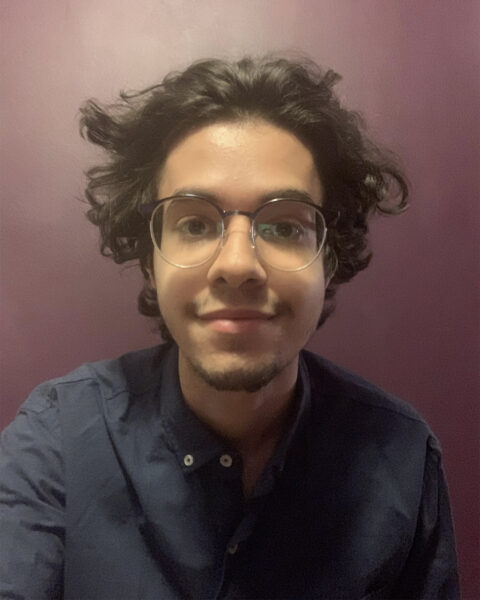 Daniel Valentine COS’24, “Spectromorphologic Analysis of Corpus of Electronic Music”
Daniel Valentine COS’24, “Spectromorphologic Analysis of Corpus of Electronic Music”
Mentor: Hubert Ho, CAMD, Music
This study would aim to document and describe commonalities in a corpus of electronic music using terms created by Dennis Smalley. This project would provide a basis of description for electronic music and could be developed further to describe music with electronic elements, like popular music.
Ascent Awardees
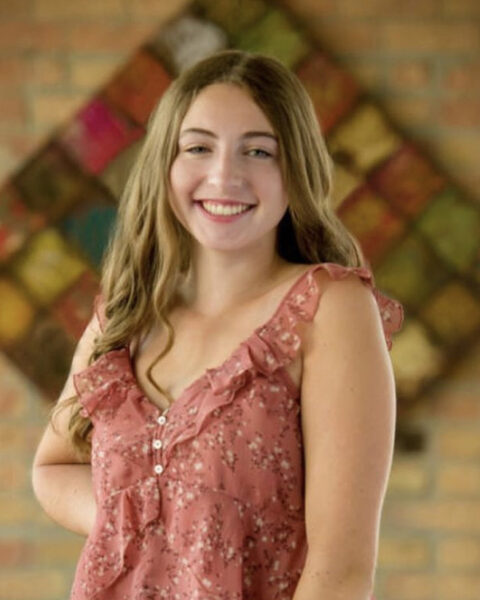 Bella Albano Bouvé’25, “Substituent Effects on Photochemical-N2-Extrusion Reactions in Borodiazenes”
Bella Albano Bouvé’25, “Substituent Effects on Photochemical-N2-Extrusion Reactions in Borodiazenes”
Mentor: Steven Lopez, COS, Chemistry and Chemical Biology
Photochemical reactions provide cheaper and greener alternatives to reactions that need heavy metal catalysts. I will use computational photochemistry to study how light can be used to steer new chemical reactions toward novel medicines. My project will explore the photodenitrogenation of borodiazenes to produce a stable version of a useful intermediate, boryl trimethylene borane (B-TMM). I will study the reaction pathway using quantum chemical calculations and uncover the reaction mechanism.
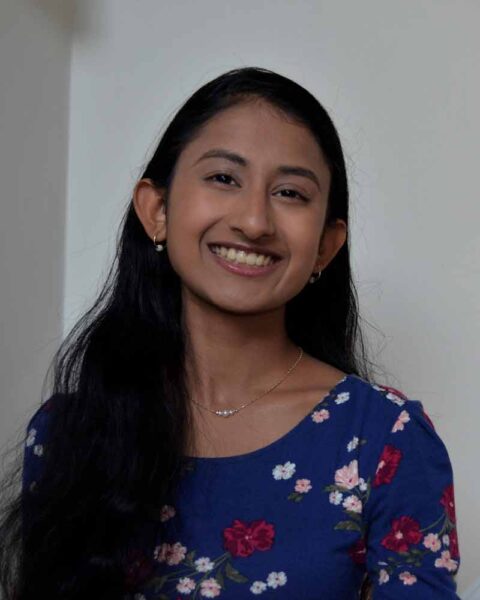 Pranali Ashara COS’25, “CSOs Impact on Organic Micropollutants in the Charles River, Boston”
Pranali Ashara COS’25, “CSOs Impact on Organic Micropollutants in the Charles River, Boston”
Mentor: Zhenyu Tian, COS, Chemistry and Chemical Biology
Organic micropollutants present in low concentrations in surface water bodies, such as the Charles River in Boston, can pose a threat to environmental and human health, and CSOs (combined sewer overflows) have been identified as a source of these contaminants. Non-target analysis (NTA) can provide insight into the correlation of this source-and-effect relationship and further characterize the interactions, toxicity, and quantity of these compounds.
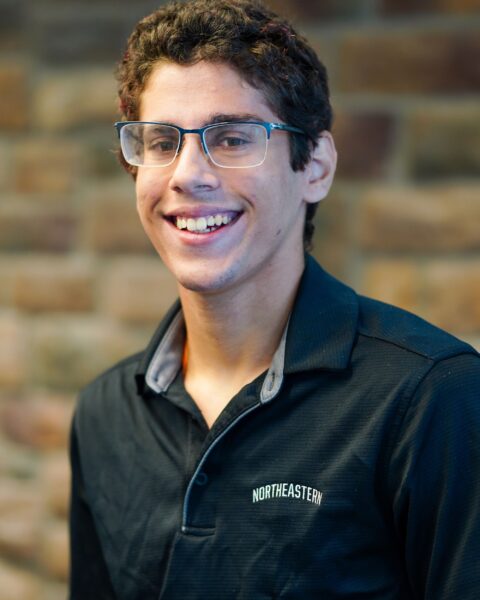 Edward Berman COS’25, “Parameter Estimation of the Point Spread Function”
Edward Berman COS’25, “Parameter Estimation of the Point Spread Function”
Mentor: Jacqueline McCleary, COS, Physics
My project attempts to quantify how starlight gets distorted by foreground objects. I am embarking on writing a Python Library that takes in images of stars taken by the James Webb Space Telescope and outputs a description of how “stretched out” the image is compared to what the object would look like without any interference. My program will give specific values for parameters of the Point Spread Function, which is the name for our mathematical model of distortion.
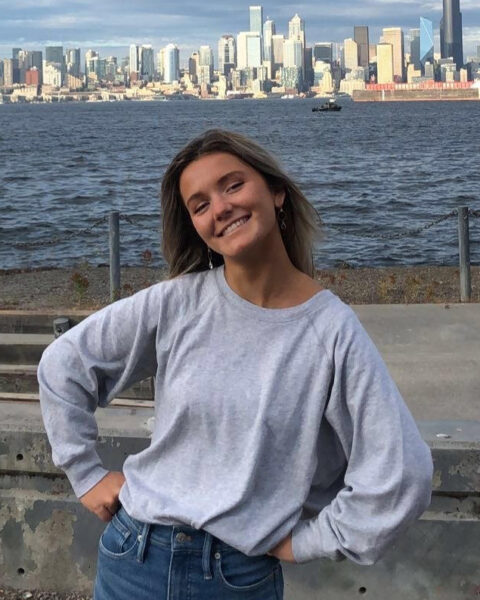 Katherine Dougherty CSSH’24, “Assessing the Usage of an Outreach Van by People with Addiction”
Katherine Dougherty CSSH’24, “Assessing the Usage of an Outreach Van by People with Addiction”
Mentor: Gordana Rabrenovic, CSSH, Sociology and Anthropology
This project seeks to measure the perception and usage of a mobile outreach van by people who use drugs. The van travels to various locations in Atlantic County, New Jersey, and connects those struggling with addiction or homelessness to treatment centers. Researching people who use drugs’ opinion and usage of this unit and its services should show both the benefits of and the challenges of the unit; the learned benefits may inspire similar services elsewhere or lead to greater funding for outreach services, while the identified challenges will allow the unit and to improve on their outreach services.
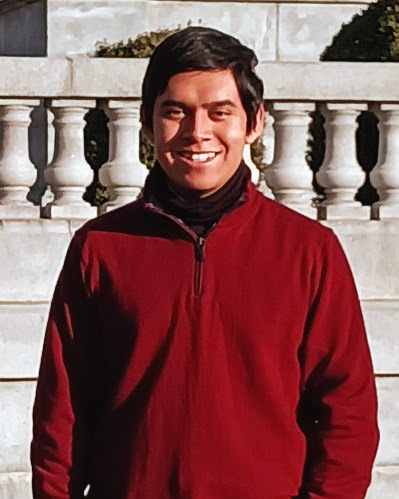 Pablo Flores-Muñoz COS’26, “Cellular Hypertranscription in Dorsally-Restricted Neural Stem Cells in Ambystoma mexicanum Spine“
Pablo Flores-Muñoz COS’26, “Cellular Hypertranscription in Dorsally-Restricted Neural Stem Cells in Ambystoma mexicanum Spine“
Mentor: James Monaghan, COS, Biology
The Axolotl salamander, Ambystoma mexicanum, has shown an impressive ability to fully regenerate its spinal cord after injury. Compellingly, previous work in our lab has shown that dorsal spinal cord cells homeostatically produce a large quantity of RNA, a phenomenon referred to as hypertranscription. Fluorescent chemical imaging experiments were carried out to localize the activity of patterning genes in hypertranscriptive cells. Further analysis of the relationship between the high number of RNA transcripts and patterning genes could plausibly identify how hypertranscription impacts neural stem cell differentiation during pattern formation in regeneration.
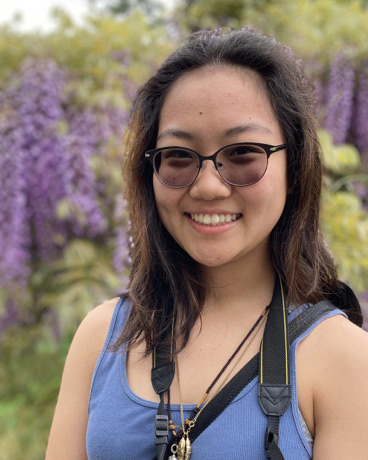 Dawning Fu COE’26, “High Throughput Glycan-Proximal Sensitivity Signature Prediction Computational Pipeline for HIV-1 Immunogen Design”
Dawning Fu COE’26, “High Throughput Glycan-Proximal Sensitivity Signature Prediction Computational Pipeline for HIV-1 Immunogen Design”
Mentor: Srirupa Chakraborty, COE, Chemical Engineering
Glycans are polymerized carbohydrates that coat most human cellular proteins and protein envelopes, the only surface vaccine targets of pathogenic viruses like coronavirus and influenza. The HIV-1 virus is a notoriously challenging vaccine target due to its highly mutagenic, dense and heterogenous glycan coating. The extremely dynamic 3D glycan shield around the protein spike envelope makes experimental imaging extremely difficult. Computational tools are well suited to overcoming these experimental barriers. This project will apply our existing computational pipeline to model 4 high-frequency mutations HIV envelope with atomistic-resolution glycan shields and identify glycan conformation changes compared to the wild-type.
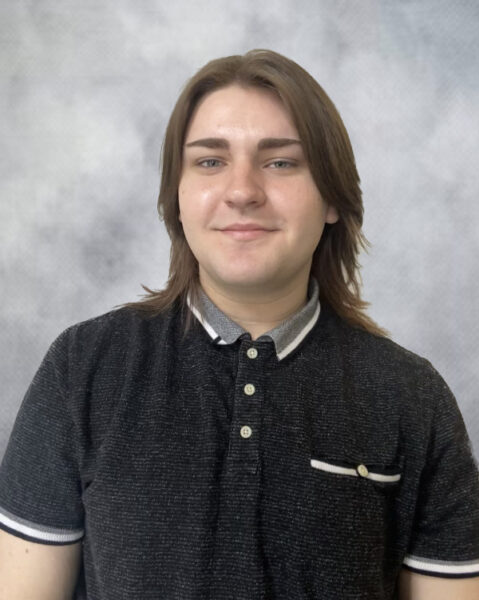 Alexander Kodak, COS’26, “Exploring the Properties of a Ru3Pt Tetrametallic Photocatalyst”
Alexander Kodak, COS’26, “Exploring the Properties of a Ru3Pt Tetrametallic Photocatalyst”
Mentor: Hannah Sayre, COS, Chemistry and Chemical Biology
I will be synthesizing a ruthenium-based tetrametallic complex that initiates light-activated reactions. My project concerns how to synthesize and purify the complex and then analyze the interactions with light by electrochemistry, UV/Vis, emission spectra, and emission quenching. This project expands on current developments in photocatalysis and especially multimetallic complexes. It also can potentially contribute to the sustainable production of pharmaceuticals and clean fuels.
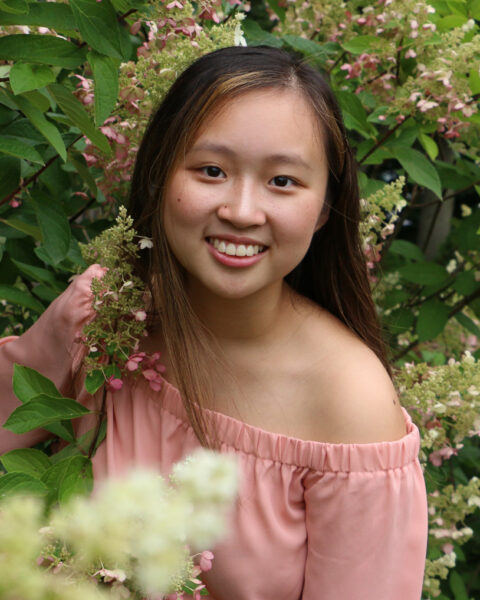 Sophia Nguyen COE’26, “Post-Acute Care Discharge Pattern of Stroke Patients: Before and During the Covid-19 Pandemic”
Sophia Nguyen COE’26, “Post-Acute Care Discharge Pattern of Stroke Patients: Before and During the Covid-19 Pandemic”
Mentor: Nasim Ferdows, CSSH, Public Policy and Urban Affairs
Every year, more than 795,000 people in the US have a stroke. Early onset rehabilitative care, such as Post-Acute Care (PAC), during acute hospitalization after a stroke is critical to improving recovery. However, the COVID-19 pandemic has likely disrupted access to PAC services. This project aims to compare the length of stay for hospitalized stroke patients, as well as their discharge destinations, before and during the COVID-19 pandemic. Using data from the CDC, we hope to analyze and quantify the relationship between discharge to in-patient rehab facilities and skilled nursing facilities for stroke patients in the post-pandemic and pre-pandemic periods.
 Seong Hwan Rhee COS’23, “Takacs Exploring the Parz Protein of Borrelia burgdorferi, the Lyme Disease Agent”
Seong Hwan Rhee COS’23, “Takacs Exploring the Parz Protein of Borrelia burgdorferi, the Lyme Disease Agent”
Mentor: Constantin Takacs, COS, Biology
This project investigates the ParZ protein in Borrelia burgdorferi, the bacterium causing Lyme disease. B. burgdorferi ‘s unusual genomic organization features ParZ, which plays a key role in chromosome segregation. We aim to identify specific DNA fragments ParZ binds to and study domain-specific mutants to understand each domain’s role. Our findings will offer insights into Borreliaceae family biology and potentially reveal additional molecular interactions involving ParZ, contributing to a better understanding of chromosome segregation.
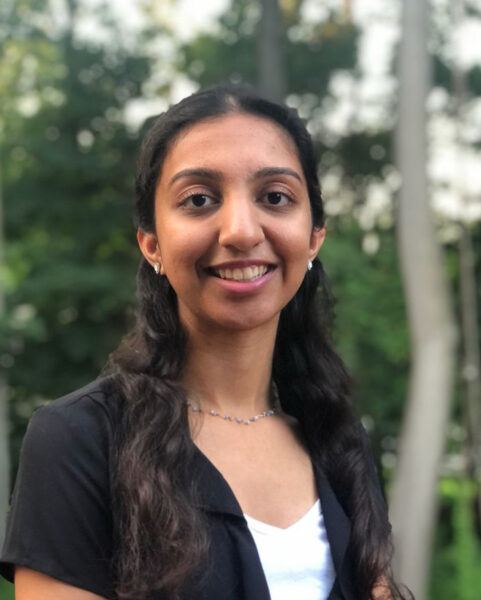 Sanjana Shastri COS’24, “Characterization of the Glycocalyx of Microvascular Endothelial Cells that Recruit Cancer Cells”
Sanjana Shastri COS’24, “Characterization of the Glycocalyx of Microvascular Endothelial Cells that Recruit Cancer Cells”
Mentor: Eno Ebong, COE, Chemical Engineering
The endothelial cell (EC) glycocalyx (GCX) coat acts as the first vascular barrier against metastasizing cancer cells. GCX function is influenced by its composition, which has been understudied for microvascular ECs. Our objective was to examine GCX composition in a cell culture model matching native conditions. We assessed GCX composition on lung and brain microvascular ECs through immunostaining, fluorescence microscopy, and computational image analysis. α2,6-linked Sialic Acid was the most abundant GCX component for both microvascular ECs. The compilation of this work will be disseminated as a review. Future work will examine sialic acid’s role in cancer cell recruitment.
 Ananya Tadigadapa COE’24, “Dense Visual Mapping for High-Speed Autonomous Ground Vehicle Navigation”
Ananya Tadigadapa COE’24, “Dense Visual Mapping for High-Speed Autonomous Ground Vehicle Navigation”
Mentor: David Rosen, COE, Electrical and Computer Engineering
Executed in Prof. David Rosen’s lab and in collaboration with Toyota Research Institute, this project will explore a new solution to the problem of self-driving cars failing to localize at high speeds and in empty terrains. Rather than individual landmarks, larger areas of similar texture will be tracked across images to more successfully locate within a given map, through a process called dense visual reconstruction. The significance of this research project is to make self-driving cars practical and safe to integrate into society.
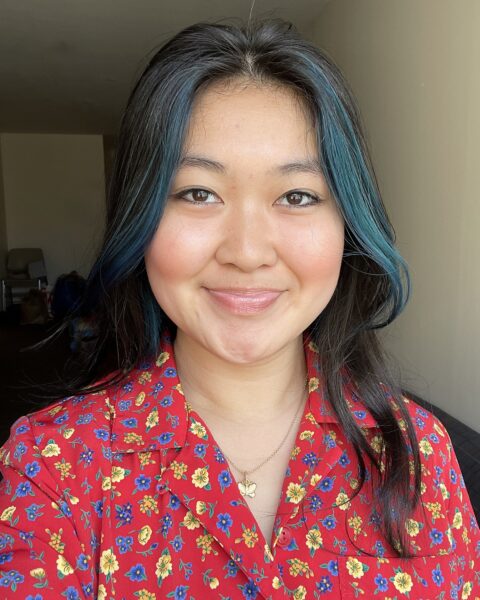 Jieying Wang COS’24, “Optimization of Total Anthocyanin Content from Red Cabbage”
Jieying Wang COS’24, “Optimization of Total Anthocyanin Content from Red Cabbage”
Mentor: Leila Deravi, COS, Chemistry and Chemical Biology
Anthocyanins are water-soluble pigments responsible for the red, purple, and blue coloration shown in produce. The chemical structure of anthocyanin provides for a range of potential applications, from edible, non-toxic pigments for use in food products to health supplements that can offer antioxidant and anti-carcinogenic benefits. Current protocols focused on extracting anthocyanins from natural sources are vague in understanding how to optimize and stabilize the final anthocyanin yield. In order to take full advantage of anthocyanin s biological properties, this research project focuses on advancing current techniques available for anthocyanin extraction in order to optimize total anthocyanin content and stability.
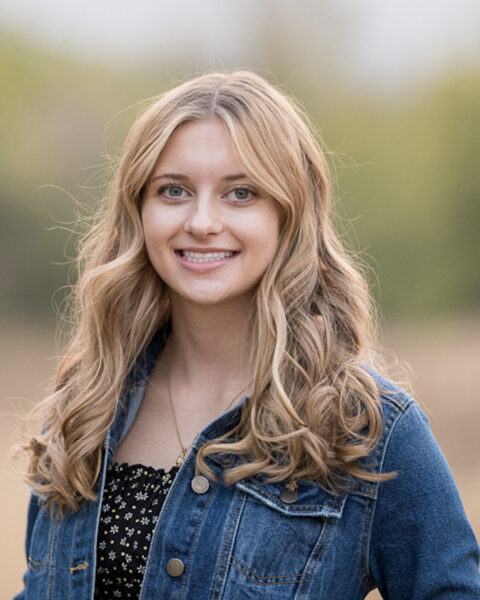 Rowan Waring COS’25, “Development of a Safe and Effective Drug for Trypanosoma cruzi (Chagas Disease) Via Series 54460”
Rowan Waring COS’25, “Development of a Safe and Effective Drug for Trypanosoma cruzi (Chagas Disease) Via Series 54460”
Mentor: Lori Ferrins, COS, Chemistry and Chemical Biology
The goal of this project is to develop a drug for Chagas Disease (CD), which is caused by the parasite Trypanosoma cruzi. CD most commonly impacts people in rural areas of South America, and chronic forms of it can cause heart failure and stroke. Chemical synthesis for this new drug is complex, and work has already been done to develop a compound with potential, yet there are still problematic mechanisms. The methodology is to investigate the relationship between the structure and activity of a molecule, and how it interacts with the parasite.
 Annie Zhang Bouvé’25, “The Carceral Resource Index: The Impact of Carceral and Public Health Expenditures on Overdose Mortality in U.S. Cities”
Annie Zhang Bouvé’25, “The Carceral Resource Index: The Impact of Carceral and Public Health Expenditures on Overdose Mortality in U.S. Cities”
Mentor: Leo Beletsky, CSSH, Law and Public Policy
We will answer this: How does overdose-related resource allocation (to carceral vs. public health institutions) impact overdose mortality in urban U.S. cities? We will develop a novel carceral resource index (CRI) score to compare the relationship between carceral (jails, prisons, courts) and public health and support expenditures in Massachusetts cities, and then determine whether there is a causal relationship between CRI and overdose mortality. We will also conduct a systematic review to investigate the effect of government spending on health outcomes in the U.S., and then identify which types of government spending have the greatest impact on health outcomes.
Summit Awardees
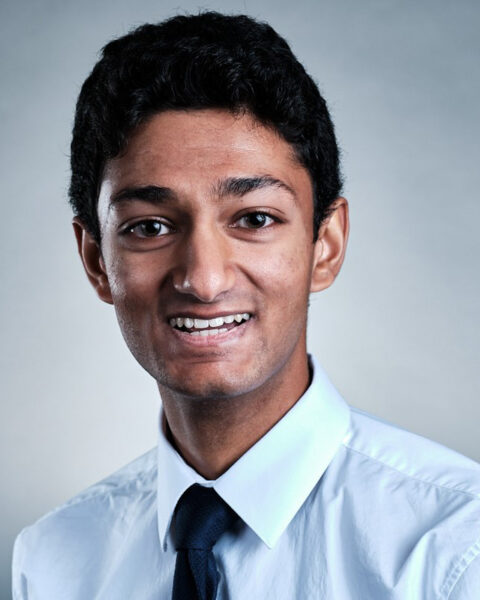 Sidharth Annapragada COE’24, “Ringing a Bell: Human Control of Complex Objects With Internal Collisions”
Sidharth Annapragada COE’24, “Ringing a Bell: Human Control of Complex Objects With Internal Collisions”
Mentor: Dagmar Sternad, COE, Electrical and Computer Engineering
In everyday activities, humans constantly manipulate complex objects with internal dynamics, like a cup of coffee. A little-explored area is how we control entities that involve internal collisions, for example, a bag with groceries or an old-fashioned bell and clapper. We examined kinematic and kinetic data from subjects ringing a bell-and-clapper in a virtual environment with a haptic interface. Based on our recent work, we hypothesized that humans seek to minimize their force inputs to the bell while still maintaining stability. This experiment shed light on how humans solve such control problems, which can help roboticists create more dexterous robots.
 Maram Bakr COE’24, “Soft Particle Characterization within Tapered Channel Systems”
Maram Bakr COE’24, “Soft Particle Characterization within Tapered Channel Systems”
Mentor: Sara Hashmi, COE, Chemical Engineering
The tracking of particle clogging under different conditions allows for the understanding and observation of the effects of different variables on clogging behavior. I intend to observe tapered channel systems and the behavior of soft particles to understand better natural systems to which such clogging patterns are applicable and beneficial for future understanding.
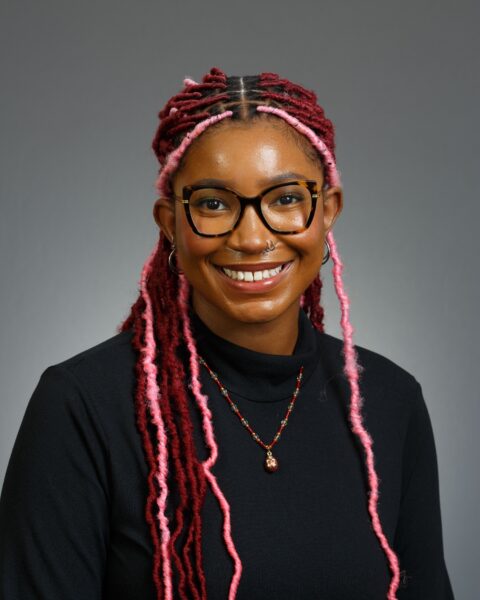 Jenia Browne CSSH’24, “Understanding Gender Expression in African Same-Sex Relationships and Diverse Gender Identities”
Jenia Browne CSSH’24, “Understanding Gender Expression in African Same-Sex Relationships and Diverse Gender Identities”
Mentor: Layla Brown, CSSH, Sociology and Anthropology
“Understanding Gender Expression in African Same-Sex Relationships and Diverse Gender Identities” explores how queer sexualities and genders can disrupt or reinforce the gender binary and traditional gender roles. Recognizing how gender expression can break down gender norms can help resist imposed boundaries on gender identity. This project highlights queer identities on a continent where queer histories and stories are often left unexplored due to various social, political, and cultural factors. My research process will involve analyzing books, journal articles, and ethnographies surrounding the topic.
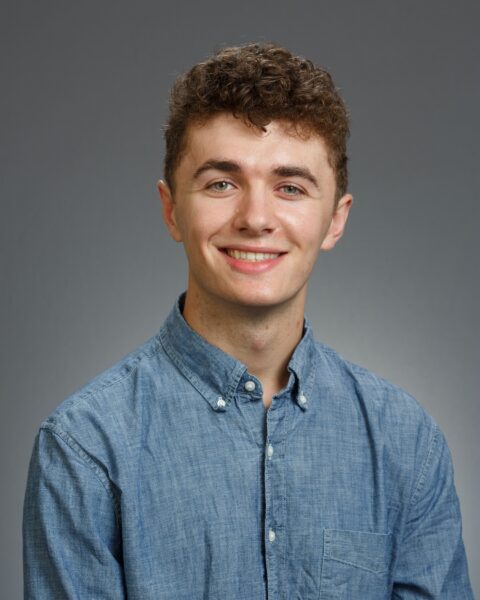 Luke DeMarco COE’24, “Investigations of the Susceptibility of Human and Murine NK Cells to Hypoxia-Adenosinergic Immunosuppression”
Luke DeMarco COE’24, “Investigations of the Susceptibility of Human and Murine NK Cells to Hypoxia-Adenosinergic Immunosuppression”
Mentor: Stephen Hatfield, Bouvé, Pharmaceutical Science
Extracellular adenosine, which is present in high concentrations in the low-oxygen environment of tumors, suppresses anti-tumor immune cells by engaging their A2A adenosine receptors (A2AR). This project investigates the role of this physiological immunosuppressive pathway on the function of natural killer (NK) cells. There is an acute medical need to improve immunotherapies of cancer by preventing the inhibition of anti-tumor NK cells in the tumor microenvironment (TME). This work aims to determine the mechanisms by which NK cells are inhibited by hypoxia and adenosine-mediated suppression, with a further goal of comparing these mechanisms in mouse cells versus human cells.
 Soumili Dey COS’24, “Learning about RecA regulation during DNA Damage Response in A. baumannii”
Soumili Dey COS’24, “Learning about RecA regulation during DNA Damage Response in A. baumannii”
Mentor: Veronica Godoy-Carter, COS, Biology
Acinetobacter baumannii is a multidrug-resistant pathogen that lives on hospital surfaces. Gene products involved in the DNA damage response in A. baumannii can cause mutations in antibiotic-binding agents, enabling resistance. Upon induction of DNA damage, RecA is a known modulator in the regulation of a mutagenesis pathway in A. baumannii. This project seeks to investigate the mechanism behind the mutagenesis pathway due to the induction of the DNA damage response. We aim to discover modulators of RecA that play a role in mutation development in the cells that lead to antibiotic resistance.
 Riley Giallanza Bouvé’24, “Effective Integration of Health Professionals in the Sharing of Personal Exposure Results”
Riley Giallanza Bouvé’24, “Effective Integration of Health Professionals in the Sharing of Personal Exposure Results”
Mentor: Phil Brown, CSSH, Sociology and Anthropology
Environmental exposure assessments have become an increasingly common tool in research and public health surveillance. Sharing personal exposure results from these studies, a process known as “report-back,” has proven to increase participants’ environmental health literacy, exposure-reduction behaviors, civic engagement, and study retention. Although previous studies have documented the benefits of report-back, no study has investigated the effectiveness of integrating clinicians in the process. The purpose of this project is to investigate how to effectively involve clinicians in the dissemination of personal environmental exposure results to participants to improve clinicians’ environmental health literacy, clinician-patient relationships, and health-related outcomes and behaviors.
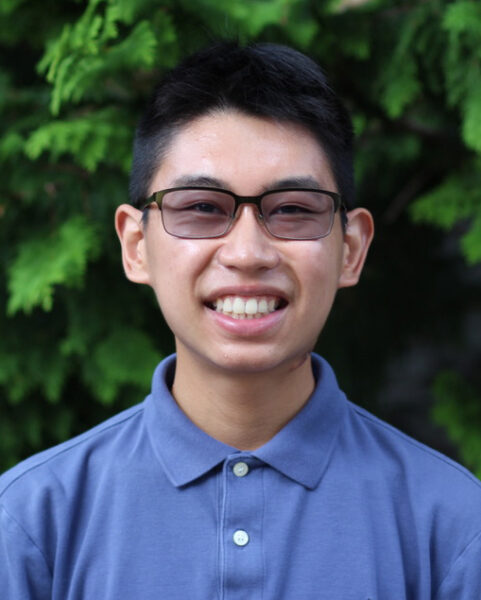 Jethro Ronald Lee Khoury’25, “BP Sequencer: A Low-Barrier-to-Entry Assessment Tool for Musical Creativity”
Jethro Ronald Lee Khoury’25, “BP Sequencer: A Low-Barrier-to-Entry Assessment Tool for Musical Creativity”
Mentor: Psyche Loui, CAMD, Music
Scientific studies in the field of musical creativity have traditionally depended on studying jazz improvisation, which only represents a very narrow part of musical creativity. To address this gap, we introduce the BP sequencer. This novel experimental interface affords generating and rating the creativity of novel musical sequences uniquely composed in the Bohlen-Pierce scale. Participants showed a wide range of creativity in generating novel sequences. Sequences that were rated as more creative were generally longer, had more unique pitches, and had more different interval sizes. This sequencer can provide a useful tool for assessing creative perception and cognition.
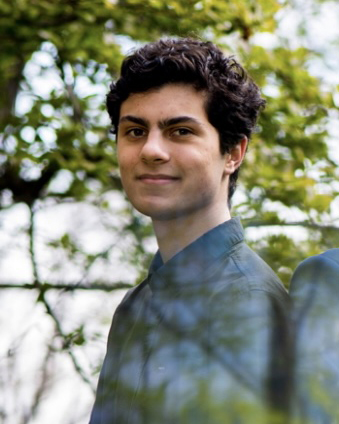 Dillon Nishigaya COS’25, “Bioengineered Mitochondria as Potential Effectors for Cancer Cell Death (Continued)”
Dillon Nishigaya COS’25, “Bioengineered Mitochondria as Potential Effectors for Cancer Cell Death (Continued)”
Mentor: Dori Woods, COS, Biology
Late-stage ovarian cancer has a high chance of recurrence due to chemotherapy-resistant OvCa cells that cause both therapeutic failure and death. Currently, there are no strategies to combat chemotherapy-resistant cells. My research explores how bioengineered mitochondria have the potential to solve this problem. Mitochondria play a critical role in ovarian cancer because they carry out extremely important biological processes that allow cancer cells to resist drugs. My research seeks to address how mitochondrial behavior is altered within chemotherapy-resistant OvCa cells, and whether or not bioengineered mitochondria can be potential effectors of cancer cell death by eliminating chemo-resistance.
 Kaitlyn Ramesh COE’25, “Leveraging Spatial Transcriptomics to Understand the Effects of the Tumor Microenvironment on Gene Expression”
Kaitlyn Ramesh COE’25, “Leveraging Spatial Transcriptomics to Understand the Effects of the Tumor Microenvironment on Gene Expression”
Mentor: Mingyang Lu, COE, Bioengineering
Cellular heterogeneity in the tumor microenvironment helps cancer cells proliferate, evade immune checkpoints, and resist most treatments. Analyzing newly developed spatial transcriptomics data enables us to study cells with knowledge of their location in the tissue. However, existing research on spatial transcriptomics is limited to locating present cell types. Hence, I will build a machine-learning model that infers cell type based on location in the tumor microenvironment, by using spatial transcriptomics data from patient tumor samples. This model will contribute to a mechanistic understanding of how cell-cell signaling supports cancer cells, and results will be shared in a publication.
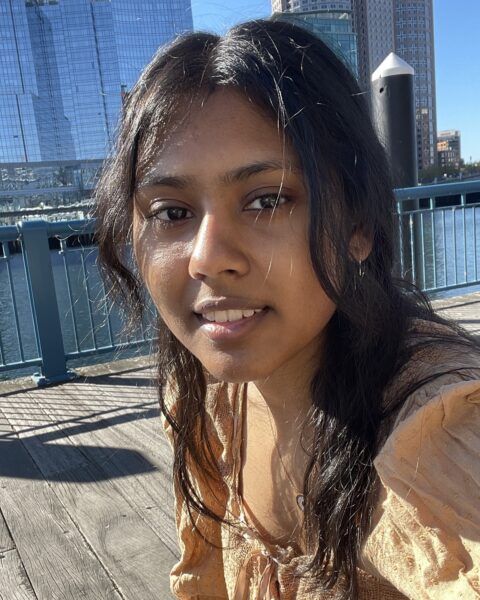 Divya Ravikumar COE’25, “Optimizing and Standardizing Quality Assessment of Functional Near-Infrared Spectroscopy Data”
Divya Ravikumar COE’25, “Optimizing and Standardizing Quality Assessment of Functional Near-Infrared Spectroscopy Data”
Mentor: Erin Meier, Bouvé, Communication Sciences and Disorders
Functional near-infrared spectroscopy (fNIRS) is a relatively new neuroimaging tool in neuroscience research. Since it requires direct contact with an individual’s scalp, fNIRS data is heavily affected by movement, causing motion artifacts. There is currently no gold standard for evaluating fNIRS data quality, leading to inconsistencies in published work. This project’s goal is to define the best method for motion artifact identification in language tasks. We aim to compare novel manual and automated artifact identification methods and compare these outputs to the other data quality measurements. Automated identification is expected to have a strong correlation to better data quality.
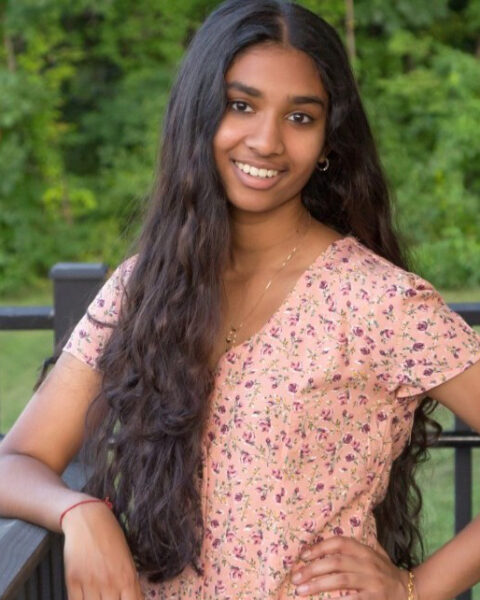 Sanjana Sankar COE’24, “Investigating Composite Cathode Performance in Composite Solid Electrolyte Lithium-Ion Batteries”
Sanjana Sankar COE’24, “Investigating Composite Cathode Performance in Composite Solid Electrolyte Lithium-Ion Batteries”
Mentor: Joshua Gallaway, COE, Chemical Engineering
This project will investigate the cathode performance in composite solid electrolyte (CSE) lithium-ion batteries. The usage of poly(ethylene oxide) in cathodes as a continuous, ion-conducting matrix embedded within the cathode and the ion transport paths of the composite solid electrolyte in li-ion coin cells will be tested. Scanning electron microscopy (SEM) will be used in this analysis to assess the continuity of phases between the CSE and the cathode to quantify the prevalence of void spaces in the composite cathode materials.
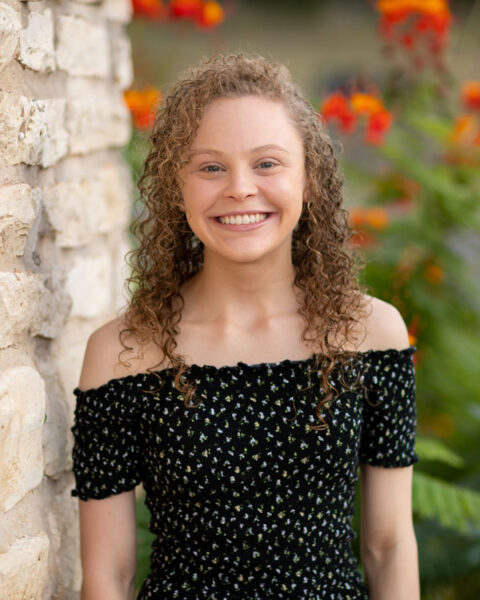 Madeline Szoo COE’25, “Cryopreservation of Neural Progenitor Cells and Co-culture of Vascular Cells for Investigation of Vascular Graft Integration”
Madeline Szoo COE’25, “Cryopreservation of Neural Progenitor Cells and Co-culture of Vascular Cells for Investigation of Vascular Graft Integration”
Mentor: Ryan Koppes, COE, Chemical Engineering
Cardiovascular disease is the leading cause of death worldwide, often requiring surgical intervention. However, bypass grafts demonstrate failure rates of about 50% at ten years post-operation. This project will optimize a novel organ chip design that may be used to study vascular graft integration into the arterial environment, as well as the role of sympathetic and parasympathetic neurons in this process. Specifically, this project will determine the optimal cryopreservation and culture conditions for venous endothelial and arterial smooth muscle cells.
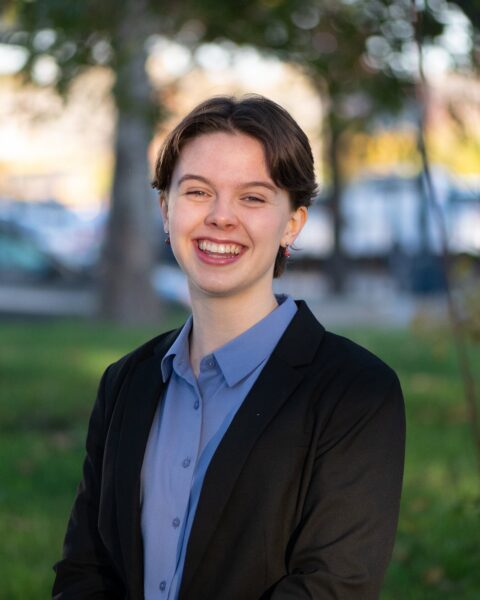 Lauren Uhl CSSH’25, “Meritocracy’s Might: Examining The Segregationist Rhetoric of Boston’s Newspapers, 1963-2021”
Lauren Uhl CSSH’25, “Meritocracy’s Might: Examining The Segregationist Rhetoric of Boston’s Newspapers, 1963-2021”
Mentor: Victoria Cain, CSSH, History
During four key crises in Boston’s exam school history (The Baby Boom, Boston Busing Crisis, Wessmann v. Boston School Committee, and COVID-19 Pandemic), debates about admissions exam requirements proliferated. While research agrees that admissions exams uphold segregation in Boston, exam requirements remained after each crisis. This project examines The Globe, Sampan, Irish Times, Phoenix, Herald, and Bay State Banner archives to identify how each newspaper depicted exam school crises and exam requirements. Findings will identify the language used to covertly defend racism and uphold segregation in Boston’s exam schools. I will continue to draft for publication in a historical journal.
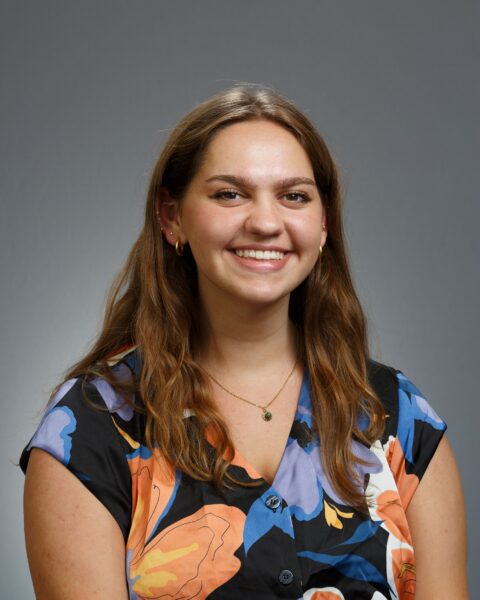 Cassandra Vongrej COS’25, “The Importance of Macroalgal Dissolved Organic Carbon Release as a Carbon Dioxide Reducing Technology”
Cassandra Vongrej COS’25, “The Importance of Macroalgal Dissolved Organic Carbon Release as a Carbon Dioxide Reducing Technology”
Mentor: Aron Stubbins, COS, Marine and Environmental Science
Carbon dioxide is one of the main contributors to global warming due to increasing atmospheric concentrations. To mitigate the impacts of climate change, natural and engineered carbon dioxide reduction (CDR) is required. The growth of macroalgae is one CDR pathway, as macroalgae sequester large amounts of carbon in the form of dissolved organic carbon (DOC). Here, sugar kelp (Laminaria saccharina) will be grown to analyze DOC release and the resistance of the released DOC to biodegradation. These results will be shared at external conferences, providing knowledge on algal carbon cycling and whether macroalgae can reduce the impacts of global warming.
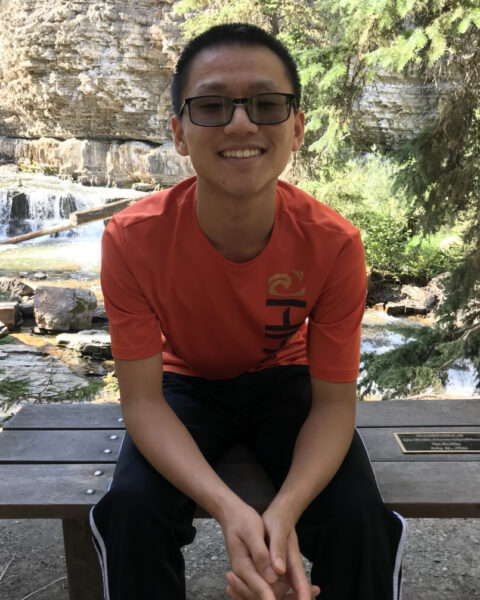 Ethan Wong COS’24, “Development of a Digitized Neurophysiological Task for Neurocognitive Assessment in Mild Traumatic Brain Injury”
Ethan Wong COS’24, “Development of a Digitized Neurophysiological Task for Neurocognitive Assessment in Mild Traumatic Brain Injury”
Mentor: Mathew Yarossi, Bouvé, Physical Therapy, Movement, and Rehabilitation Science
The proposed project aims to develop a sensitive test of cognitive-motor function for the assessment of aerobic exercise as an intervention for mild TBI. We digitized the classical Trail Making Test (TMT) and aim to test the integration of eye tracking with this current paradigm to investigate the complex interactions between multiple cognitive-motor domains. The immediate goal is to integrate and validate the addition of eye-tracking to the existing d-TMT. We then hope to show that the d-TMT with eye tracking provides a sensitive measure of cognitive-motor recovery following mild-TBI that distinguishes between the aerobic exercise intervention and control groups.
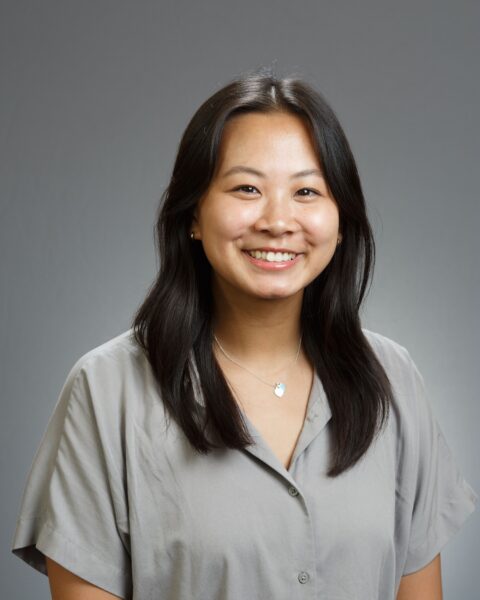 Gwyneth Wong COS’24, “Optimizing an Oxygen Releasing Cryogel Prostate Cancer Vaccine”
Gwyneth Wong COS’24, “Optimizing an Oxygen Releasing Cryogel Prostate Cancer Vaccine”
Mentor: Sidi Bencherif, COE, Chemical Engineering
My project is to optimize oxygen-releasing cryogels which would act as a delivery system for prostate cancer. The tumor microenvironment is hypoxic, which changes the characteristics and behavior of immune cells and decreases the activity of these cells. I will optimize the biomaterial design, characterization of the cryogels, and finally, encapsulation and release of bioactive materials from the cryogel. The cryogels are expected to disperse oxygen into the body in a controlled manner to induce immune cell activity.
Trail-Blazer Awardees
 Marvin Chong Khoury/COS’25, “Designing a Recipe That Encourages the Encoding of Semantics into Digital Systems through Interdisciplinary Collaboration”
Marvin Chong Khoury/COS’25, “Designing a Recipe That Encourages the Encoding of Semantics into Digital Systems through Interdisciplinary Collaboration”
Mentor: Brandon Sichling, CAMD, Art and Design
The unfolding process that governs the transformation of ideas into tangible outcomes is something I observed in computer science’s design recipe, the architect Christopher Alexander’s generative processes, and project management methodologies such as Scrum. By combining the principles underlying these ideas, I aim to develop a recipe of my own that allows individuals from various domains of knowledge, and a programmer, to effectively collaborate and combine ideas from various disciplines into a digital system. The recipe will be tested on a video game, a medium interdisciplinary and digital in nature.
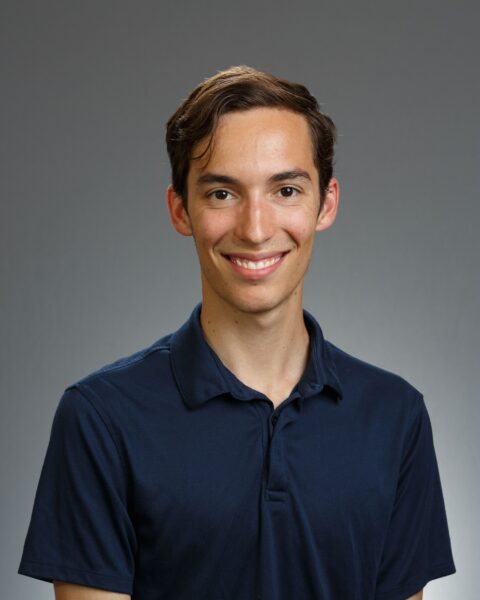 William Cutler Khoury’24, ” Automatic Calibration for Trapped-Ion Quantum Computers”
William Cutler Khoury’24, ” Automatic Calibration for Trapped-Ion Quantum Computers”
Mentor: Devesh Tiwari
My project aims to develop a software system to automatically calibrate trapped-ion quantum computers, with specific techniques targeting qubit micromotions. Calibrations will be treated as nodes in a graph structure that the software will traverse to achieve optimal calibration over many parameters that can depend on eachother. The final product will be an open-sourced software tool that researchers worldwide can use, published in JOSS or a related journal. This work will help to increase the pace of research on quantum devices and improve accuracy of computations, bringing the promise of quantum computing one step closer to reality.
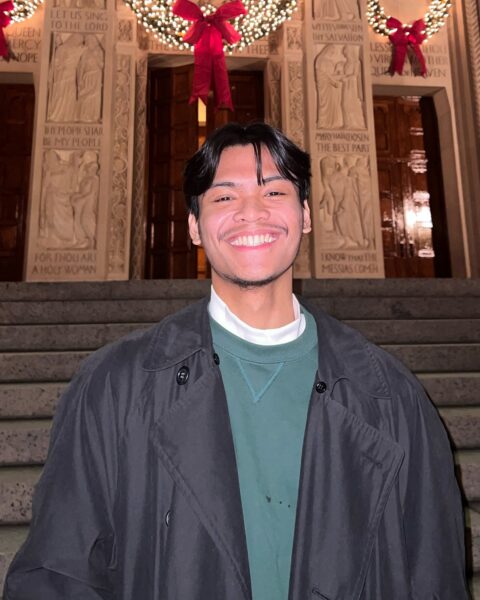 Migue Van Louis Darcera COS’25, “Exploration of Novel Biofilm-related Genes in Bacillus subtilis”
Migue Van Louis Darcera COS’25, “Exploration of Novel Biofilm-related Genes in Bacillus subtilis”
Mentor: Yunrong Chai, COS, Biology
Bacillus subtilis is a soil-dwelling gram-positive bacterium capable of forming biofilms, which are a consortium of bacterial cells encased in a self-produced matrix that allows the community to attach to natural and unnatural surfaces. Across the 4,100 protein-encoding genes of B. subtilis, the function of many of these genes and their relevance to the assembly of biofilms is still unknown. I will thus use a method known as transposon mutagenesis, which introduces a random genomic insertion in a library of B. subtilis cells, to identify these uncharacterized genes and perform additional tests to discover their potential role in biofilm formation.
 Maya De Los Santos COE’25, “Building Community between Latin American Women in Gig Work through Culturally-Informed System Design”
Maya De Los Santos COE’25, “Building Community between Latin American Women in Gig Work through Culturally-Informed System Design”
Mentor: Saiph Savage, Khoury, Computer Science
The gig economy provides millions of crowd workers with flexible, secure jobs. Our project highlights the importance of considering the well-being and cultural backgrounds of crowd workers — especially those from marginalized backgrounds — when designing crowd work systems that analyze their labor. We surveyed 100 crowd workers in Latin America to understand the motivations, aspirations, and challenges behind their work. Our qualitative analysis reveals that many participants wish to connect with workers of similar backgrounds to share experiences and advice. Using these findings, we propose system designs to empower Latin American crowd workers to engage in collective action and form a community.
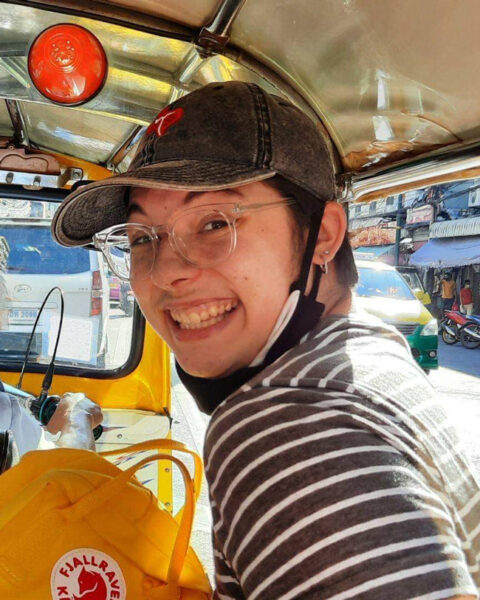 Jasper Duval CSSH’23, “Access to Gender Affirming Care for Transgender and Gender-Expansive Sex Workers in Bangkok, Thailand”
Jasper Duval CSSH’23, “Access to Gender Affirming Care for Transgender and Gender-Expansive Sex Workers in Bangkok, Thailand”
Mentor: Liza Weinstein, CSSH, Sociology and Anthropology
This research aims to understand how transgender and gender-expansive (TGE) sex workers in Thailand access gender-affirming care. For many TGE individuals, gender-affirming care is an essential step in self-actualization. Despite this, many barriers exist to accessing this life-saving care, especially for sex workers in Thailand. I hope to understand how this population accesses this care in order to identify barriers to future research and activism. I hope to use the data collected over this period to draft an initial analysis, which will become my capstone project and, eventually, a published paper in transgender health journals.
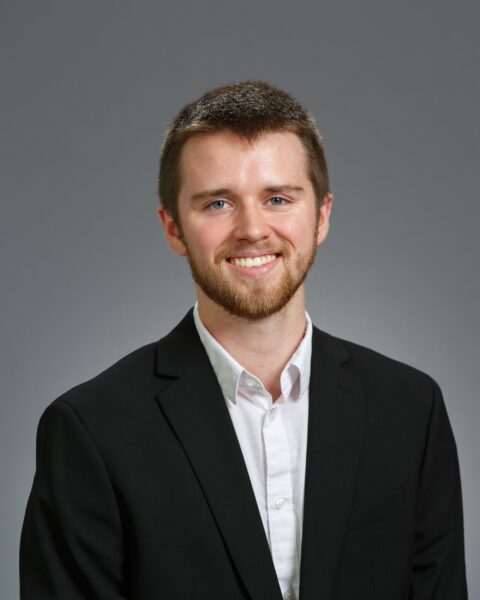 Hayden Libershal CSSH’25, “An Analysis of California Agricultural Pass Programs”
Hayden Libershal CSSH’25, “An Analysis of California Agricultural Pass Programs”
Mentor: Daniel Aldrich, CSSH, Political Science
California has put in place agricultural pass programs to allow workers to enter wildfire evacuation zones so they may conduct essential agricultural work. My project will collect data across five counties and seven wildfires on these programs, do an analysis of the variance in the usage of the passes, and include interviews with stakeholder groups. This will be the most comprehensive and significant research ever to be undertaken on the agricultural pass programs
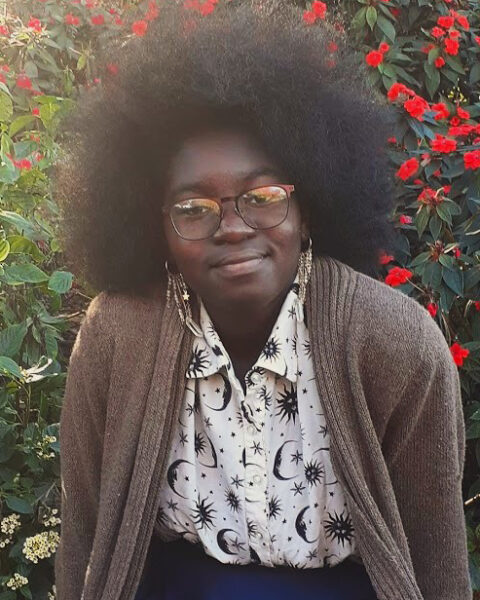 Suubi Magoola CAMD’26, “INK ON PARCHMENT: The Lives of Ugandans in Diaspora”
Suubi Magoola CAMD’26, “INK ON PARCHMENT: The Lives of Ugandans in Diaspora”
Mentor: Michelle Wallace, Assistant Director of the LGBTQA Cultural Center
This project will counter the common assumption in pop media that Black culture is a monolith, by highlighting the nuances of Ugandan culture. I will visit 3 Ugandan women and AFAB (assigned female at birth) individuals of different cultural backgrounds: Ugandan, Ugandan-American (raised in Uganda), and British-Ugandan, to interview and shadow them. Along with a reflection of my own identity as a Ugandan-American individual, raised primarily in America, these notes will be drawn as a comic. This comic will be presented in a self-orchestrated exhibit, featuring panels from the comic animated and presented in an immersive, augmented-reality format.
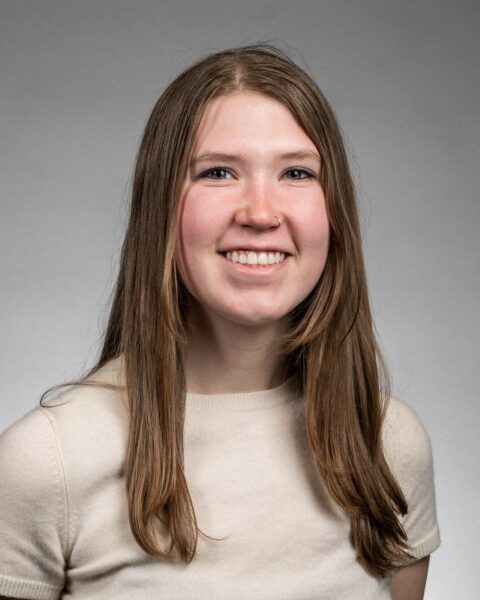 Gillian McClennen COS’23, “Exploring Permafrost-Affected Soil Microbiomes in the Swiss Alps”
Gillian McClennen COS’23, “Exploring Permafrost-Affected Soil Microbiomes in the Swiss Alps”
Mentor: Yunrong Chai, COS, Biology
Climate change disproportionately affects permafrost-affected soils. As the temperature of permafrost soils increases due to climate change, the microorganisms in these environments increase respiration and metabolic output. Increased respiration, in turn, produces greenhouse gases that exacerbate the rate of climate change. Understanding the genetics and capabilities of permafrost-soil microorganisms is important to understand the extent of this positive feedback loop. In this project, we intend to assess the temperature growth capabilities and genetic traits of permafrost microbes using standard microbiology techniques and advanced genetic annotation software.
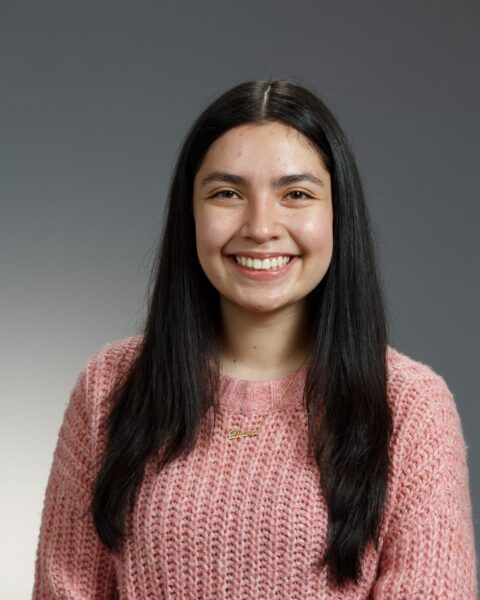 Diana Turrieta COS’25, “Mechanisms of BAZ2B Chromatin Remodeling at DNA Secondary Structure”
Diana Turrieta COS’25, “Mechanisms of BAZ2B Chromatin Remodeling at DNA Secondary Structure”
Mentor: Tovah Day, COS, Biology
Very little is known about the bromodomain adjacent to zinc finger 2B (BAZ2B), but research suggests its absence may contribute to neurodevelopmental disorders. BAZ2B is part of the ISWI chromatin remodeling family, which holds a wide array of nuclear functions. To learn more about BAZ2B’s mechanism of action in human cells, in situ Proximity Ligation Assays will be used to study the protein interactions between ISWI family members, SMARCA1 and SMARCA5, and G quadruplexes (G4), DNA secondary structures capable of triggering genome instability. The characterization of these interactions may support further discoveries on BAZ2B’s function, genome stability, and intellectual disabilities.
